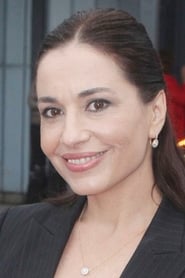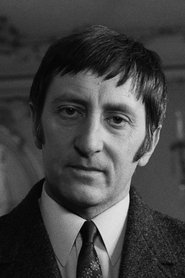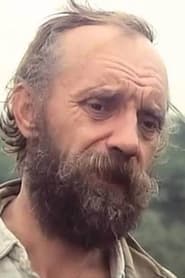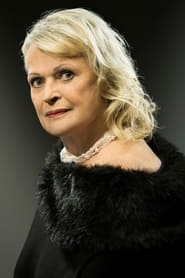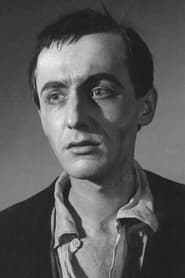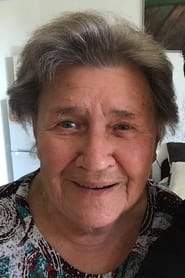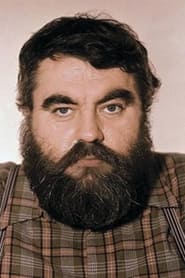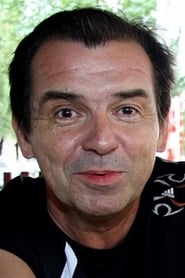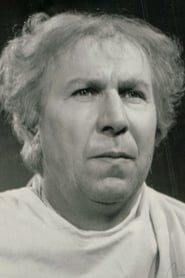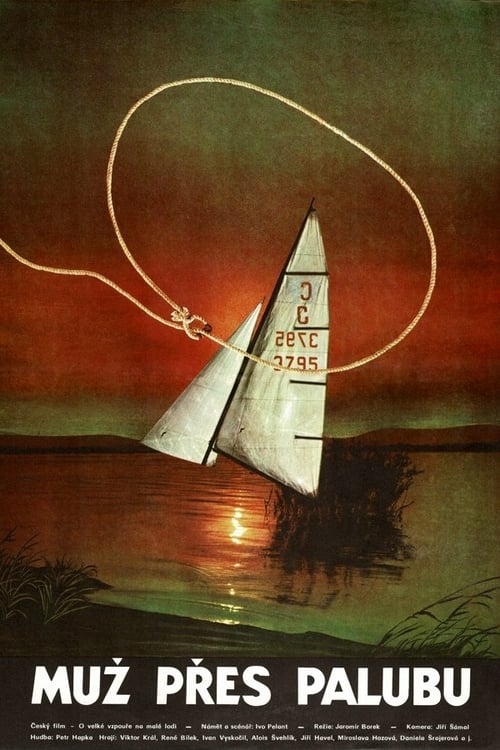
Ask Your Own Question
What is the plot?
The crisp air of early autumn in 1984 bites at the cheeks of the young climbers as they gather at the youth mountaineering club's rustic wooden lodge, nestled deep in the Czech countryside. The date is unspoken, but the season is unmistakable--leaves swirl in golden eddies, and the scent of pine and damp earth fills the air. The lodge, a sturdy structure with climbing gear stacked neatly against its walls, serves as the group's base for the weekend's training camp. Members arrive with backpacks and ropes, their laughter echoing through the hills as they unpack and prepare for the challenges ahead.
Ivan Kočička, known to everyone as Kocour, moves among them with quiet authority. He checks each piece of equipment with meticulous care, his hands steady and his eyes sharp. "A good climber always checks his gear twice," he says, his voice calm but firm, as he adjusts a harness for one of the younger members. His words hang in the air, a quiet reminder of the dangers that lurk in the mountains.
Tomáš "Tommy" Novák, eager to prove himself, watches Kocour with a mix of admiration and impatience. He is restless, always pushing the limits, and today is no different. As the group gathers for a briefing, Tommy slips away to attempt a difficult climb on the nearby rock face without proper supervision. Kocour notices and follows, his voice cutting through the wind. "Tommy, slow down! In the mountains, one mistake can cost you everything." Tommy grins, but he listens, and the group laughs as the tension eases.
Jana Svobodová, the club's instructor and mentor, calls everyone together for the weekend's activities. She stands tall, her presence commanding respect. "This weekend is about trust--trust in your gear, trust in your team, and trust in yourself," she says, her eyes sweeping over the group. The words settle into the air, a promise and a warning all at once.
Petr Václavík, a quiet and observant member, sits apart, sketching in a notebook. His eyes dart around, taking in every detail. During a group meal, he makes a cryptic comment that draws a few curious glances. "Things aren't always as they seem," he murmurs, his voice barely audible. No one pays much attention, but the words linger, a quiet unease settling over the group.
Miroslav "Mirek" Dvořák, the club's joker, sets up a fake "danger zone" sign to scare the younger members. His laughter is loud, but there's a nervous edge to it, a hint of something darker beneath the surface. The group enjoys the prank, but Kocour watches Mirek with a thoughtful expression, his instincts tingling.
The weekend unfolds with a series of climbing exercises and team-building activities. The group hikes along the forest trail, a winding path dense with trees and underbrush, their boots crunching on fallen leaves. The climbing wall near Mikulov, marked with colored chalk and climbing routes, becomes the site of several key events. Tommy's near-fall is a close call, but Kocour's quick intervention saves him. The group's trust in Kocour grows, but so does the tension.
One evening, as the group returns to the lodge, Petr is found dead at the base of the climbing wall, having fallen from a high ledge. The initial assumption is that it was an accident, but Kocour's sharp eyes catch something amiss--the harness Petr was using is damaged in a way that suggests tampering. He says nothing, but his mind races, piecing together the clues.
The next day, Kocour confronts Mirek on the forest trail. "You tampered with Petr's harness," he accuses, his voice low and steady. Mirek denies it, his face pale, but his nervousness is unmistakable. "I don't know what you're talking about," he stammers, but Kocour sees the truth in his eyes.
Tommy, meanwhile, grows frustrated with Kocour's suspicions. "You're too paranoid," he says, his voice rising in the lodge. "In the mountains, paranoia can save your life," Kocour replies, his gaze unwavering. The tension between them is palpable, but the group's focus remains on the mystery of Petr's death.
Kocour's investigation leads him to the old mine shaft on the outskirts of the forest. The shaft is partially collapsed, filled with debris, but he finds a hidden cache of stolen climbing equipment and a journal. The journal reveals that Petr had discovered Mirek's plan to steal the club's equipment and sell it for profit. Mirek, desperate for money and in debt, had planned to frame Tommy for the theft.
The truth about Petr's death is uncovered when Kocour finds evidence that Mirek tampered with Petr's harness to silence him and cover up the theft. The journal also reveals Mirek's motive--his desperation and greed had driven him to commit murder.
Tommy, confronted with the evidence, confesses that he knew about Mirek's plan but was too afraid to speak up. "I was scared," he admits, his voice trembling. "I didn't want to get involved." Kocour listens, his expression unreadable, but he sees the fear and regret in Tommy's eyes.
The climax comes at the mountain peak, Kocour's Lookout, a high vantage point overlooking the entire area. The peak is difficult to reach, accessible only to the most skilled climbers. Kocour, Tommy, and Mirek make the ascent, the tension between them thick as the air grows thinner.
At the peak, Mirek attempts to push Kocour off the edge, his desperation turning to violence. "You ruined everything!" he shouts, his face twisted with rage. But Tommy intervenes, tackling Mirek and saving Kocour. The struggle is brief but intense, the wind howling around them as the police arrive, alerted by Jana after Kocour used the radio to communicate his suspicions.
Mirek is arrested, his plans and crimes laid bare. The group returns to the lodge, the weight of the weekend's events heavy on their shoulders. Jana thanks Kocour for his bravery and quick thinking. "You saved us all," she says, her voice filled with gratitude.
Tommy apologizes to the group for his earlier silence. "I was wrong," he says, his voice steady. "I should have spoken up." The group forgives him, their trust in each other renewed.
The film ends with the group preparing for a new climbing expedition, symbolizing their renewed trust and unity. Kocour stands at the edge of the lodge, looking out at the mountains. "In the mountains, the truth always finds its way to the surface," he says, his voice calm. Jana joins him, her eyes on the horizon. "And sometimes, it takes a little courage to follow it," she replies.
The group's laughter fills the air once more, a testament to their resilience and the bonds they've forged. The mountains stand tall, silent witnesses to the drama that unfolded, their secrets revealed but their mysteries eternal.
More Movies Like This
Browse All Movies →What is the ending?
In the ending of "Third Clinch for Tommy," Tommy faces his final match, where he must confront not only his opponent but also his own fears and insecurities. The climax of the film revolves around this pivotal fight, which ultimately leads to a resolution of his internal struggles. The film concludes with Tommy achieving a personal victory, regardless of the match's outcome, as he learns to embrace his identity and the support of those around him.
As the final act unfolds, the atmosphere is charged with anticipation. The scene opens in the dimly lit locker room, where Tommy sits alone, his hands wrapped in tape, the weight of the world resting on his shoulders. The camera captures the beads of sweat forming on his brow, reflecting his anxiety and determination. He glances at his reflection in the mirror, searching for the confidence that has eluded him throughout the film. The echoes of his past failures and the pressure of expectations loom large, but he steels himself for the challenge ahead.
The scene shifts to the arena, where the crowd roars with excitement. The bright lights illuminate the ring, casting long shadows that dance across the canvas. Tommy steps into the spotlight, his heart racing as he hears the cheers and jeers from the audience. His opponent, a formidable fighter known for his ruthless tactics, stands across the ring, exuding confidence and aggression. The tension is palpable, and the stakes are high.
As the bell rings, the fight begins. Tommy's initial movements are hesitant, a reflection of his inner turmoil. He dodges and weaves, trying to find his rhythm while battling the self-doubt that threatens to overwhelm him. The camera captures the intensity of the fight, the sound of fists connecting with flesh, the grunts of exertion, and the gasps from the crowd. Each punch thrown is not just a physical blow but a manifestation of Tommy's struggle to prove himself.
Midway through the match, Tommy takes a hard hit, sending him sprawling to the mat. The referee begins the count, and the audience holds its breath. In this moment of vulnerability, Tommy's thoughts race. He recalls the support of his friends and family, the sacrifices they made for him, and the lessons he learned about resilience. With a surge of determination, he rises to his feet, shaking off the pain and igniting a fire within himself.
The final rounds of the fight are a whirlwind of action. Tommy finds his footing, countering his opponent's attacks with newfound strength and strategy. The choreography of the fight is both brutal and beautiful, showcasing Tommy's growth as a fighter and as a person. Each punch he lands is a step toward reclaiming his identity, and the crowd begins to rally behind him, chanting his name.
As the match reaches its climax, Tommy delivers a decisive blow that sends his opponent to the canvas. The referee counts to ten, and the arena erupts in cheers. Tommy stands victorious, but the true victory lies in his transformation. He raises his arms in triumph, not just for winning the match but for overcoming his fears and embracing who he is.
In the aftermath, the scene shifts to the locker room once more. Tommy, now filled with a sense of peace, reflects on his journey. His friends and family rush in, celebrating his victory. The camaraderie and love surrounding him are palpable, reinforcing the film's message about the importance of support and self-acceptance. Tommy smiles, knowing that he has not only won a fight but has also found his place in the world.
The film concludes with a final shot of Tommy, standing tall and confident, a man who has faced his demons and emerged stronger. The screen fades to black, leaving the audience with a sense of hope and the understanding that true victory comes from within.
Is there a post-credit scene?
"Third Clinch for Tommy," produced in 1984, does not feature a post-credit scene. The film concludes its narrative without any additional scenes after the credits roll. The story wraps up with a poignant resolution, focusing on the main character, Tommy, and his journey throughout the film. The absence of a post-credit scene allows the audience to reflect on the themes of perseverance and personal growth that are central to Tommy's character arc.
What motivates Tommy to pursue boxing despite the challenges he faces?
Tommy is driven by a deep desire to prove himself and escape the shadow of his past failures. His internal struggle is fueled by a need for validation and acceptance, both from himself and his estranged family. The boxing ring becomes a symbol of his fight for redemption.
How does Tommy's relationship with his coach evolve throughout the film?
Initially, Tommy's relationship with his coach is strained, marked by skepticism and a lack of trust. As they train together, the coach becomes a father figure, guiding Tommy not just in boxing techniques but also in life lessons. Their bond deepens as they face adversities together, culminating in mutual respect and understanding.
What role does Tommy's family play in his journey as a boxer?
Tommy's family is a significant source of conflict and motivation. His strained relationship with his father, who disapproves of his boxing career, adds emotional weight to his journey. The family's expectations and past disappointments haunt Tommy, pushing him to fight harder to gain their approval and redefine his identity.
What are the key challenges Tommy faces in his boxing career?
Tommy faces numerous challenges, including physical injuries, self-doubt, and the pressure of high-stakes matches. Each fight tests his resilience and determination, forcing him to confront not only his opponents but also his inner demons. The emotional toll of these challenges shapes his character and growth throughout the film.
How does the climax of the film reflect Tommy's personal growth?
The climax showcases Tommy in a pivotal match where he must confront not only his opponent but also his fears and insecurities. This moment is a culmination of his training, sacrifices, and emotional journey. As he fights, the audience witnesses his transformation from a troubled young man into a confident fighter, embodying his hard-earned growth.
Is this family friendly?
"Third Clinch for Tommy," produced in 1984, is a film that contains several elements that may not be considered family-friendly. While the movie primarily focuses on themes of personal struggle and redemption, it includes scenes that could be objectionable or upsetting for children or sensitive viewers.
-
Emotional Turmoil: The protagonist experiences significant emotional distress, including moments of despair and conflict that may be intense for younger audiences to process.
-
Family Conflict: There are scenes depicting strained family relationships, including arguments and misunderstandings that could be distressing.
-
Physical Altercations: The film includes instances of physical confrontations that may be violent or aggressive, which could be unsettling for viewers.
-
Substance Use: There are references to alcohol and possibly other substances, which may not be appropriate for children.
-
Themes of Loss: The narrative explores themes of loss and grief, which could be heavy and emotional for sensitive viewers.
These aspects contribute to a tone that may not be suitable for all audiences, particularly younger children or those who are sensitive to emotional or intense situations.



